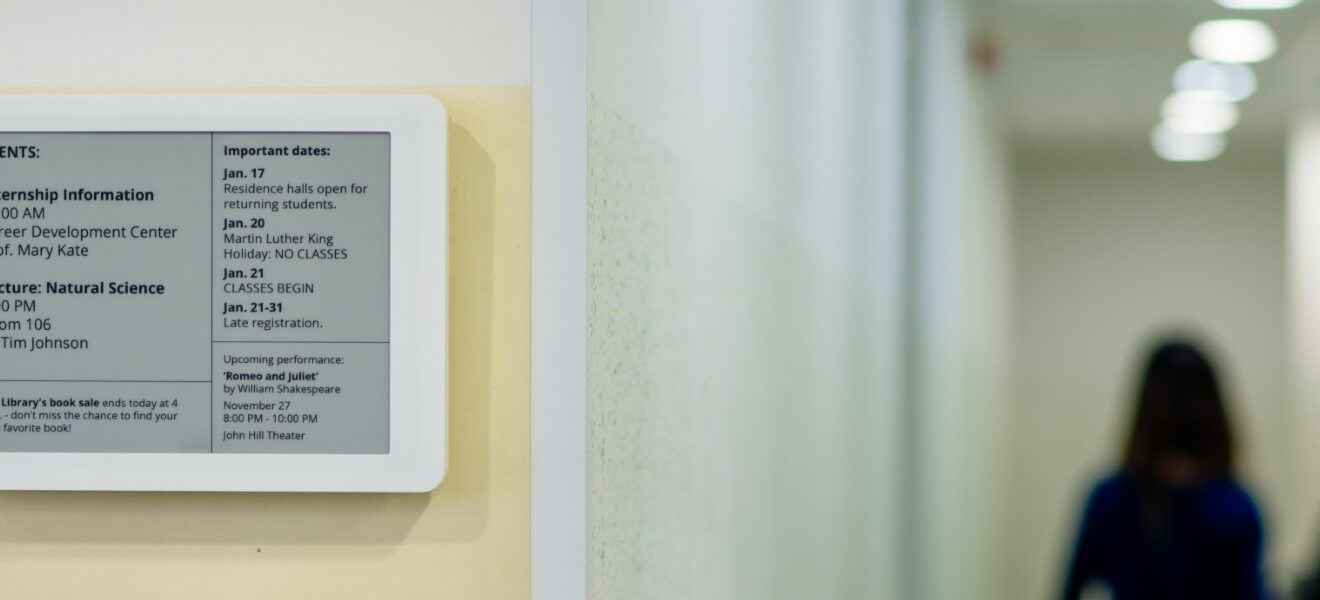

Deploying a digital signage project in the shortest time possible
Visionect, 15 Dec 2014
Based on our experience, Visionect has developed a methodology that supports the fast and successful deployment of your digital signage products.
Visionect has developed a methodology that supports clients’ product launches on time, from the first expression of interest to the roll-out of a production-ready e-paper solution.
Deploying a successful digital signage project on time and on budget can mean the difference between you and your solution becoming competitive quickly or dragging out the way to market. No matter the signage to be implemented – interactive traffic signs, at station displays, notice boards etc. – the success of a project will, besides on proven technology, also depend on efficient project management, valuable deployment experience and highly reliable project partners.
Streamlining complex project cooperations, for example from the field of innovative technology and electronics, can strongly support you to start driving electronic paper displays (EPDs) successfully in the shortest time possible. Based on our experience from recent outdoor signage projects, Visionect has developed a methodology that supports clients’ product launches on time.
From the first expression of interest in deploying signs on our e-paper technology to the rollout of a production-ready solution, Visionect makes sure to keep the activities lean. Read about improving quality and reducing production time and cost in the following six phases:
Phase one: Defining project objectives
Visionect gets to know your project objectives while you gain initial, hands-on experience on electronic paper, discovering the Visionect Platform for electronic paper through our development kit. Soon you are able to estimate e-paper and platform potential of meeting your project objectives.
Phase two: Product discovery and prototyping
When launching parking signs, traffic signage, digital bulletin boards or traffic information displays based on our e-paper technology, you can start working on a prototype on our platform at the earliest stage of the project. By preparing a demo setup and keeping in mind technological realities of using e-paper, a MVP can be only a step away.
Phase three: Developing the MVP
A minimum viable product can be achieved fast, in a few weeks. We are just as excited as you are when the basic components are put together and the sign’s main functionalities are being tested. Multiple iterations of deployment, testing and improvements turn out a fast and stable enough MVP to start work on the pilot project.
Phase four: Setting up the pilot project
The stable architecture and proven performance of the MVP are the starting points of a pilot deployment, testing use in a real-environment. In the pilot phase acceptance among users of the signs – i.e. car drivers, bus passengers, restaurant guests – is also tested. Users’ feedback is an important final validation tool for the product prior to entering the production phase.
Phase five: Production
The signage product is now perfected on the basis of input received and lessons learned. After diminishing the last bits of concern, the first batch is put into mass production, launched and mounted in a real environment.
Phase six: Rollout
After a period of testing, building and validating, the project is now being rolled out through applying validated learning and measuring customers’ reactions and behaviors against the signage presented.
Tags

